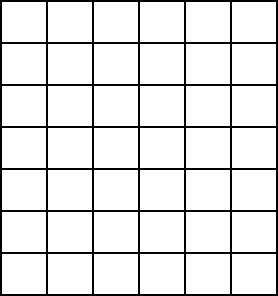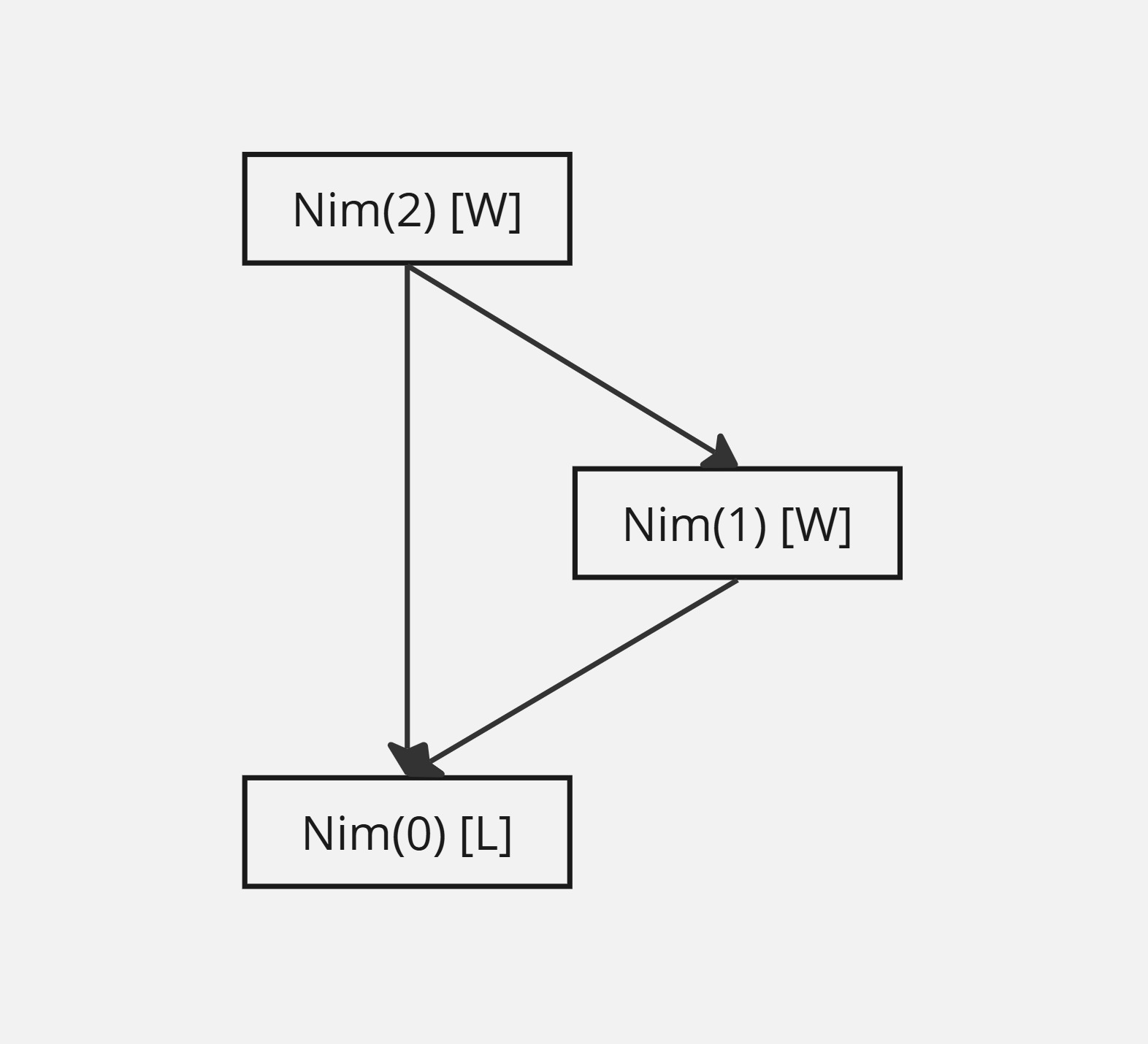Problems
How many cuboids are contained in an \(n\times n\times n\) cube? For example, we’ve got \(n^3\) cuboids of size \(1\times1\times1\), and obviously just \(1\) of size \(n\times n\times n\) (which is the whole cube itself). But we also have to count how many there of size \(1\times1\times2\), \(1\times2\times3\), and several more.
In the \(6\times7\) large rectangle shown below, how many rectangles are there in total formed by grid lines?

Simplify \(F_0-F_1+F_2-F_3+...-F_{2n-1}+F_{2n}\), where \(n\) is a positive integer.
Explain why a position \(g\) is a winning position if there is a move that turns \(g\) into a losing position. On the other hand, explain why a position is a losing position if all moves turns it into a winning position.
A technique that can be used to completely solve certain games is drawing game graphs. Given a game \(G\), we draw an arrow pointing from a position \(g\) to a position \(h\) if there is a move from \(g\) to \(h\).
As a simple example, the game graph of \(\text{Nim}(2)\) is shown below.

Draw the game graph of \(\text{Nim}(2,2)\). Is \(\text{Nim}(2,2)\) a winning position or losing position?
Is \(\text{Nim}(2,5)\) a winning position or a losing position?
Let \(x,y\) be nonnegative integers. Determine when \(\text{Nim}(x,y)\) is a losing position and when it is a winning position.
Is \(\text{Nim}(1,2,3)\) a winning position or a losing position?
Is \(\text{Nim}(1,2,4,5,5)\) a winning position or a losing position?
When we write \(137\) in decimal, we mean \(1 \times 10^2 + 3 \times 10 + 7 \times 1\). If we write it instead using powers of \(2\), we have \(137 = 1 \times 2^7 + 0 \times 2^6 + 0 \times 2^5 + 0 \times 2^4 + 1 \times 2^3 + 0 \times 2^2 + 0 \times 2^1 + 1 \times 2^0\). To tell apart binary representation from decimals, we can use the following notation: \(137 = (10001001)_2\).
What is the number \(273\) in binary? Note that using binary is useful for finding whether a particular Nim game is a winning position or a losing position.